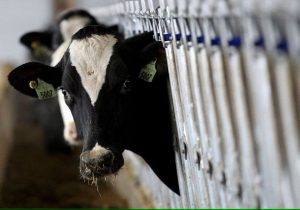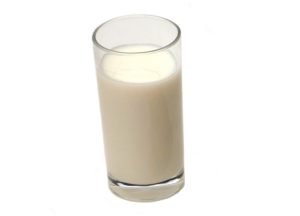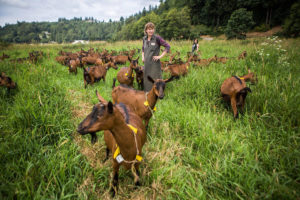Traders brought 59.2 million pounds of product to market, up from 56.3 million in the last event, as some added volume of powder pulled on the market. The average winning price was $4,089, down from $4,231.
The dive was led by whole milk powder, down 6.2%, after leading the gains last time with a 21% jump. Butter was down 2.8%, after posting a 13.7% rise, but anhydrous milkfat was up 3.7%, following a 7.4% advance last time.
The gains were led by lactose, up 8.6%, which followed a 4.9% upshot last time. Skim milk powder was up 0.7%, after a 3.5% rise, and there was no volume traded on cheese.
StoneX Group says the GDT 80% butterfat butter price equates to $2.5043 per pound U.S., down 7.4 cents, after jumping 30.8 cents last time, and compares to CME butter which closed Tuesday at a real bargain $1.71. GDT skim milk powder averaged $1.5197 per pound, up from $1.4976, and whole milk powder averaged $1.8521 per pound, down from $1.9795. CME Grade A nonfat dry milk closed Tuesday at $1.1725 per pound.
U.S. prices strong
CME block Cheddar climbed to $1.7950 per pound last Thursday. It closed Friday at $1.79, up 5.75 cents on the week after gaining 11.5 cents the previous week, but was 8.25 cents below a year ago.
The barrels finished at $1.5525, 4.50 cents higher and 5.25 cents above a year ago. Only 3 cars of barrel were sold last week at the CME.
CME traders awaited Tuesday morning’s Global Dairy Trade auction as well as the February Milk Production report on Thursday but took the blocks up to $1.81 per pound Monday, with a second sale at $1.8075, but an offer pulled them back to $1.80., up a penny on the day. They were unchanged Tuesday, holding at $1.80, highest since Jan. 15.
The barrels gave up 1.25 cents Monday but regained 0.25 cents Tuesday on a trade, hitting $1.5425, 25.75 cents below the blocks.
Midwestern cheesemakers are reporting stronger sales, says Dairy Market News. Positive foodservice demand has been rare the past 12 months, but there has been a notable shift in March. Spot milk availability varies but there were some flat class prices reported for the first time in 2021. Cheese production rates are reflecting the increased orders and, for the most part, cheese market tones have “regained some bullish vigor recently,” says DMN, though inventories are reportedly growing, as well.
Retail cheese demand in the west remains steady, though some contacts believe it may decrease due to loosening COVID restrictions on eating out. Contacts have seen a slight uptick in food service demand. Mozzarella cheese continues to move well but cheese inventories remain heavy and buyers are receiving a lot of offers from manufacturers, especially for Cheddar-style cheeses. Milk is plentiful and cheese production is running at or near capacity, according to DMN.
Butter closed Friday at $1.7150 per pound, up 2.50 cents on the week, following its 22 cent leap the previous week, but was still 9.75 cents below a year ago, with 14 sales reported on the week.
The butter was unchanged Monday but inched a half-cent lower Tuesday, to $1.71.
Midwestern butter producers report stronger foodservice demand in recent weeks and are hopeful the trend continues deeper into the second quarter, as bullish foodservice demand tones have seldom been positive since the onset of COVID. Butter churning is at a brisk clip, as demand has strengthened and export demand is notably rising. Butter market tones have steadied since the unexpected surge following the “new crop” rule on the CME, says DMN.
Cream is abundant in the West but has no problem finding a home. Butter makers have ramped up output for several weeks to meet spring holiday demand. Retailers are comfortable with price levels and are placing heavy orders but expect that to cool as prices increase. Foodservice demand is beginning to pull a little harder as dine-in restrictions continue to loosen. Butter makers and foodservice buyers are having difficulty forecasting butter needs and butter makers are getting more inquiries from international buyers so they’ve opted to make 82% butter. Sales of butter and anhydrous milkfat into export channels and domestic ice cream production are pulling more heavily at cream supplies but butter inventories are still heavy.
Grade A nonfat dry milk finished the week at $1.17 per pound, down 0.75 cents, but 11.75 cents above a year ago, on 8 sales for the week.
Monday’s powder inched 0.25 cents higher, with 5 bids going unfilled, but it stayed put Tuesday, holding at $1.1725, with 3 loads exchanging hands.
Spot dry whey hit 59.50 cents per pound last Monday but closed Friday at 59.25, up 1.25 cents on the week and 24.50 cents above a year ago, with only 1 sale for the week.
The whey keeps inching higher, adding 0.25 cents both Monday and Tuesday setting a new record high for its three-year lifespan of 59.75 cents per pound.
Demand strong
The USDA’s January demand data showed a lot of positive news. Total cheese disappearance hit 1.14 billion pounds, up from a year ago for the first time since September and topped January 2020 by 3.3%.
HighGround Dairy points out that American-style cheese did the heavy lifting, with both domestic and export demand stronger versus prior year.
Butter disappearance totaled 155.2 million pounds, up 12%, and topped the year ago level for the third consecutive month, according to HGD, “an encouraging sign as production and stocks remain burdensome.”
Nonfat dry milk disappearance increased for the third consecutive month, hitting 215.6 million pounds, including skim milk powder, strongest January since 2018.
Lock your profit
Uncertainty seems to never end in the dairy industry and right now dairy farmers face challenging contrasts. U.S. milk output is rising as we enter the spring flush, but will rising demand and exports offset that? U.S. milk prices are strengthening but will rising feed costs offset that, and what will government food purchases look like in COVID relief under the new administration?
StoneX dairy broker Dave Kurzawski pointed out in the March 15 “Dairy Radio Now” broadcast that rising demand is the key point because “Demand is primarily responsible whenever we see $2 cheese or $2 butter.”
He said that we have seen stronger than normal retail demand for the past 12 months or so and that will come up against stronger foodservice demand as cities and states reduce restaurant restrictions due to COVID.
“We don’t know what that reopening will mean,” he cautioned, though he believes it will be “a shock to the supply chain across the country and even globally.”
Grocery stores and foodservice will be fighting for the same stomach space, he explained, and “In the fog of war you can have higher prices.” That will settle down in the next year or two, he said, “but for the next six months, you’re in the fog of war on the demand side,” and underscores the need to lock in milk prices, he concluded.
“With the higher feed costs, it’s about profit margin,” he said. “But it will be a tough year for dairy farmers on the buy side.”








